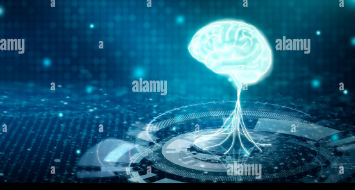In today’s rapidly evolving technological landscape, the relationship between artificial intelligence (AI) and engineering is more intertwined than ever. These two fields complement and empower each other, driving innovation across industries and reshaping the way we approach complex challenges. As AI continues to evolve, engineering disciplines are both influencing and being transformed by its capabilities. Understanding this dynamic partnership reveals how deeply AI and engineering fuel progress and shape our future.
How Engineering Drives AI Innovation
Building the Foundation for Intelligent Systems
Engineering provides the critical infrastructure that supports AI development. From designing high-performance processors and optimizing data storage systems to constructing advanced communication networks, engineering disciplines lay the groundwork on which AI technologies are built.
Electrical, mechanical, and computer engineers collaborate to create the hardware necessary to train and deploy complex AI models. Innovations like GPUs, TPUs, ASICs, and neuromorphic chips enable AI algorithms to process enormous amounts of data efficiently, making modern AI applications—from autonomous vehicles to natural language processing—feasible.
Software Engineering: Crafting AI Architectures
On the software side, engineering principles guide the development of robust, scalable, and secure AI systems. Software engineers apply structured methodologies to create algorithms, build machine learning pipelines, and ensure AI models are reliable and maintainable.
By blending coding expertise with AI knowledge, engineers enhance model training efficiency, streamline data processing, and ensure the ethical deployment of AI technologies.
The Impact of AI on Modern Engineering
Automating and Enhancing Engineering Processes
AI is not just a beneficiary of engineering; it’s also revolutionizing engineering itself. Through machine learning, engineers can automate routine tasks, optimize designs, and predict system failures before they occur.
In civil engineering, AI analyzes structural health data to predict maintenance needs, reducing costs and enhancing safety. In manufacturing, AI-driven predictive maintenance systems keep machinery operating smoothly, minimizing downtime. Meanwhile, aerospace engineers use AI to simulate and optimize flight designs, reducing the time and cost of prototyping.
Design Optimization and Innovation
AI-powered generative design tools allow engineers to input specific goals and constraints, letting AI algorithms produce numerous design alternatives that human minds might never conceive. This leads to more innovative, efficient, and sustainable products across industries—from lightweight automotive parts to more efficient renewable energy systems.
Smart Infrastructure and Systems
Modern engineering projects increasingly integrate AI to create “smart” systems. Smart cities, for example, rely on AI to manage traffic flow, optimize energy consumption, and enhance public safety. Similarly, smart grids use AI algorithms to predict energy demand and balance loads more efficiently, leading to more sustainable energy usage.
AI-Enhanced Engineering Education and Research
Transforming How Engineers Are Trained
The rise of AI is also reshaping engineering education. Universities now incorporate AI, machine learning, and data science into their engineering curriculums. Aspiring engineers learn how to leverage AI tools to solve complex problems, preparing them for a future where interdisciplinary skills are crucial.
Research in engineering fields is also benefiting from AI. Machine learning algorithms accelerate the discovery process in materials science, bioengineering, and environmental engineering, leading to breakthroughs at unprecedented speeds.
Key Challenges in the AI-Engineering Relationship
Ethical Considerations and Bias
As AI takes on greater roles in engineering applications—especially in critical fields like healthcare, transportation, and infrastructure—ethical concerns become paramount. Engineers must ensure that AI systems are transparent, fair, and unbiased.
Integrating ethical AI development frameworks into engineering projects is essential to avoid unintended consequences and build trust in AI-driven systems.
Security and Reliability
Engineers must also address the challenges of cybersecurity and system reliability. AI systems, especially those embedded in critical infrastructure, must be safeguarded against cyberattacks and designed to perform reliably under a variety of conditions.
Ensuring AI safety and resilience is a significant engineering challenge that demands ongoing innovation and vigilance.
Interdisciplinary Collaboration
True synergy between AI and engineering requires collaboration across disciplines. Engineers, data scientists, ethicists, and domain experts must work together to design AI systems that are not only technically sound but also socially responsible and aligned with human values.
Breaking down traditional academic and professional silos is crucial to maximizing the potential of this synergistic relationship.
Real-World Examples of AI and Engineering Synergy
Autonomous Vehicles
Self-driving cars are perhaps the most visible manifestation of AI and engineering collaboration. Mechanical, electrical, and software engineers work alongside AI specialists to design vehicles capable of sensing, reasoning, and acting autonomously, reshaping the future of transportation.
Healthcare Robotics
In healthcare, engineers design robotic systems enhanced by AI to assist in surgeries, rehabilitation, and elderly care. These intelligent robots can perform delicate tasks with precision and adapt to patient-specific needs, improving outcomes and reducing healthcare costs.
Space Exploration
NASA and other space agencies leverage AI to guide robotic missions, analyze astronomical data, and even aid in spacecraft design. Engineering marvels like Mars rovers and space telescopes depend on AI algorithms to operate efficiently millions of miles from Earth.
Conclusion: A Partnership That Defines the Future
The relationship between artificial intelligence and engineering is not merely collaborative—it is symbiotic. Engineering provides the structures, systems, and solutions that allow AI to flourish, while AI, in turn, transforms engineering by enhancing capabilities, accelerating innovation, and expanding horizons.
As both fields continue to advance, their partnership will be pivotal in solving humanity’s greatest challenges, from climate change and healthcare to transportation and education. Recognizing and nurturing the synergistic relationship between AI and engineering is essential for shaping a smarter, more sustainable, and more connected world.
Also Read :
